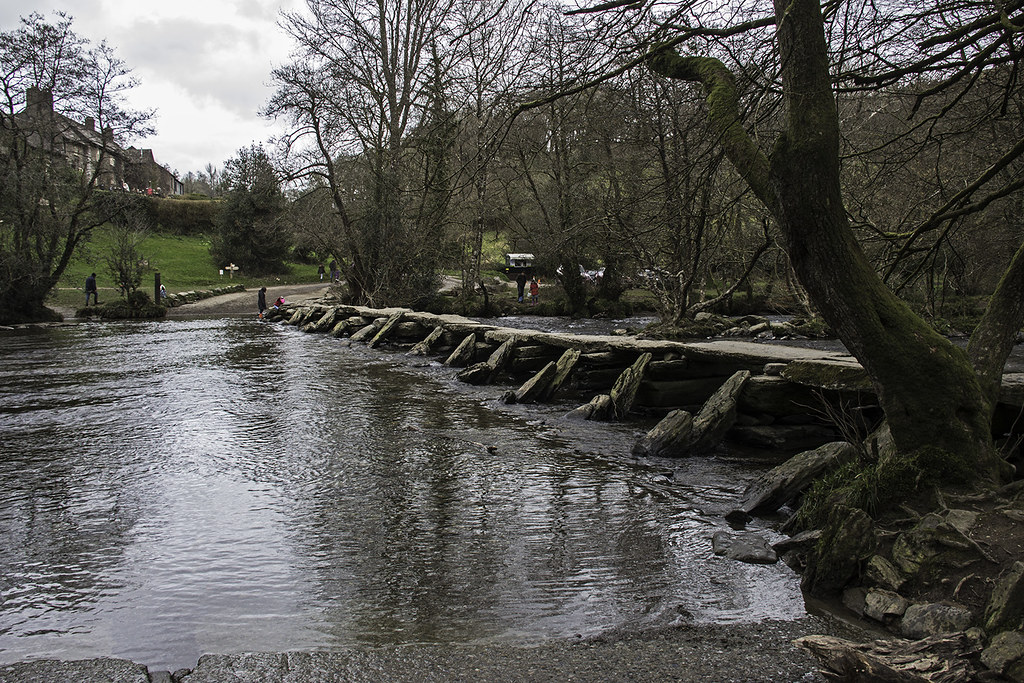Speaking of clapper bridges… we were talking about clapper bridges, right? They’re not all confined to Devonshire. The Tarr Steps clapper bridge is a notable exception located in Somerset at Exmoor National Park. Unlike the clapper bridges of Devon that date primarily from the middle ages and later eras, the Tarr Steps clapper may date back as much as three thousand years (map).
On To the Water

What does this have to do with English whitewater, you may wonder? Well, thank you for asking. The Tarr Steps across the River Barle provide a put-in for what is reputedly the only naturally-occurring whitewater in England. Let’s put the usual caveats in place. This does not include the rest of the island of Great Britain as whitewater exists in Scotland and Wales too. Also, for all I know there could be other whitewater in England but I couldn’t find evidence of them on the Intertubes. The vast and knowledgeable 12MC audience will tell me otherwise if that’s the case, and with my appreciation of course.
Various sources list this stretch of the River Barle as ranging between Class II at normal river flow and Class III when the river runs higher. Class II is for novices. It may require occasional maneuvering to avoid rocks and modest waves. Class III is for intermediate paddlers. Waves are larger and they could tip the boat of those less experienced. However, people don’t generally suffer injuries on waves of either Class. So these rapids are more fun than dangerous.
The Ride
I’ve rafted on rivers of greater difficulty before, but one must take advantage of what’s available. This would still be a challenging ride because of mitigating factors besides the water itself.
It’s difficult for me to capture a decent Street View image at any point along the route. Steep drop-offs and thick vegetation block nearly every clear shot of the river. The only passable one I found along the entire stretch appeared where a country road crossed the Barle, above.
It is readily apparent that a raft would never make it down the Barle. Thus a kayak or canoe would work better. The river is too narrow, the water too shallow, the branches too constricting to allow all but the smallest of vessels to pass through unscathed. The UK Rivers Guidebook provides the best overview and accounts from people who have run this stretch of river. Obstacles include downed trees, scratching brambles, a series of weirs, and random abandoned metal obstacles strewn along the path. Even so, it still sounds like a fun ride.

I’ve been neglecting the readers from England for awhile as I’ve mined topics closer to home. Hopefully the last couple of articles begins to make up for some of that. Have any of you experienced this segment of the River Barle in person?

Leave a Reply